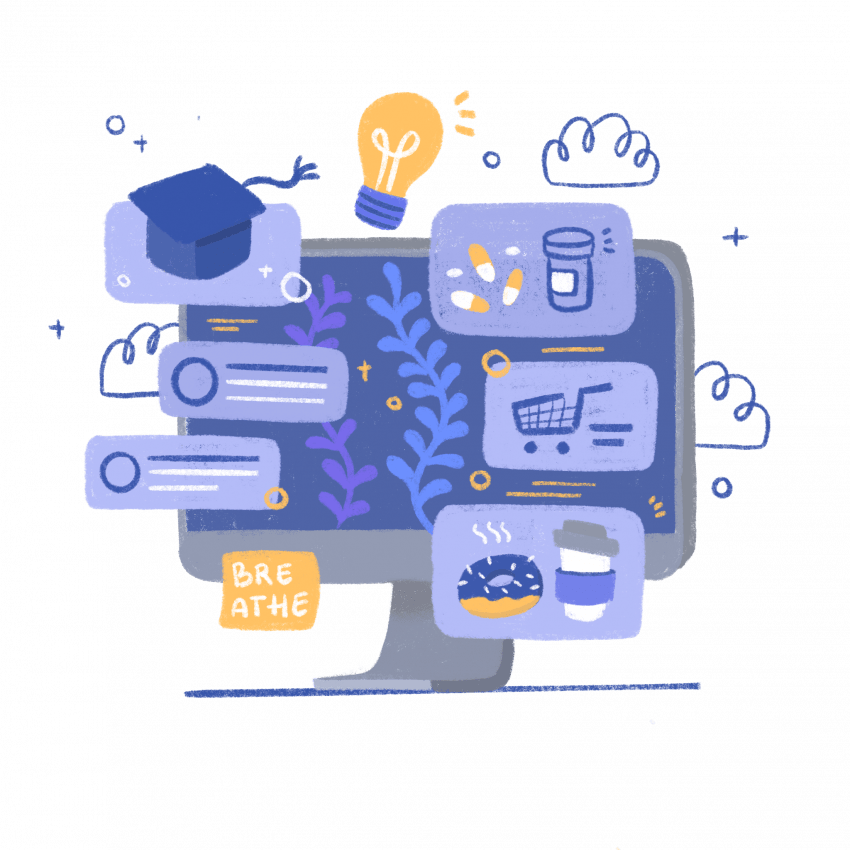
Whether it’s taking exams, working from home or conducting meetings, our laptops, phones and tablets are now the sites for most of our activities. However, this change is more complicated than we think.
Even with the increased quality of modern internet services, the digital world isn’t a replacement for the real one. Restaurants and healthcare services, for example, can’t effectively function online forever and, while it is normal for individual physical activity to be done at home or in a physically-distanced setting, the future of group sport remains uncertain.
Academic institutions also face the challenge of delivering a quality education at a distance and libraries cannot effectively function as a community space when only a limited number of services can be provided solely on the internet.
Whether it’s sustainable or not, many companies have moved their operations online to cope with the pandemic. So how exactly have these services been adapting to the new digital world?
For starters, virtual healthcare services like Lumino and Maple are connecting healthcare professionals and patients online to provide quality services without the potential risks of a hospital or clinic setting.
For restaurants and other food services, increasing their online presence and contactless delivery has also proven to be a good solution.
Many companies that already operated online are tweaking their services and products to cater to a larger demand and help customers follow the popular message: “Stay home. Stay safe.” Companies like Shaw are partnering with a digital learning company to maximize the usefulness of their services to users. Netflix, on the other hand, has created a COVID-19 relief fund to help people in the creative community earn an income while production is on pause.
While these entertainment services do accommodate diverse needs, there is only so much a person can do when cooped up in their house all day. That’s why many gyms now offer online classes and workouts. Even Nike has waived fees for its monthly online subscription service so users can be healthy while staying at home.
Some provinces are looking to or have already opened businesses and others will follow behind according to their reopening plans. Phase three of Saskatchewan’s reopening plan is set for June 8. It focuses on food, fitness and child-care services while increasing the number of people allowed in gatherings.
For post-secondary institutions, the initial impact of the virus caused plenty of controversy over altered mark distributions, cancelled exams and alternative assessment methods. Many classes and exams switched to online delivery through services like Zoom and OneDrive. Even so, problems ranging from digital inequality to restricted services still persist. There is also the question of how assessments such as labs will take place when classes are delivered remotely.
Companies such as Loblaws, Walmart and DoorDash are offering delivery services to provide a safe shopping experience for communities. SkipTheDishes is launching a partnership with Food Banks Canada in addition to supporting small businesses during the pandemic.
With everything shifting online, it also becomes difficult for individuals with limited internet access to keep up, especially businesses in rural areas. Communicating and staying updated on the pandemic can be frustrating for people outside of cities.
For libraries, which usually help bridge this gap, the focus is now also on online services, such as OverDrive and Hoopla. However, these institutions face the challenge of accommodating people in a pandemic-fearing world once they can reopen.
People are asking questions about when they can finally see friends and family in person — if things will ever go back to the state of ‘normal’ they were accustomed to before. Provinces are easing restrictions, and businesses are opening up, but precautionary measures are being taken, and the lurking doubt of the effectiveness of these measures is consistent.
Going forward, despite the monumental changes that have taken place during the last few months, through creative and innovative solutions we are finding a way to combat the number of problems caused by the pandemic. However, uncertainty over whether or not an online world is enough, and its feasibility, remains.
—
Fiza Baloch | Staff Writer
Graphic: Anh Phan | Design Editor